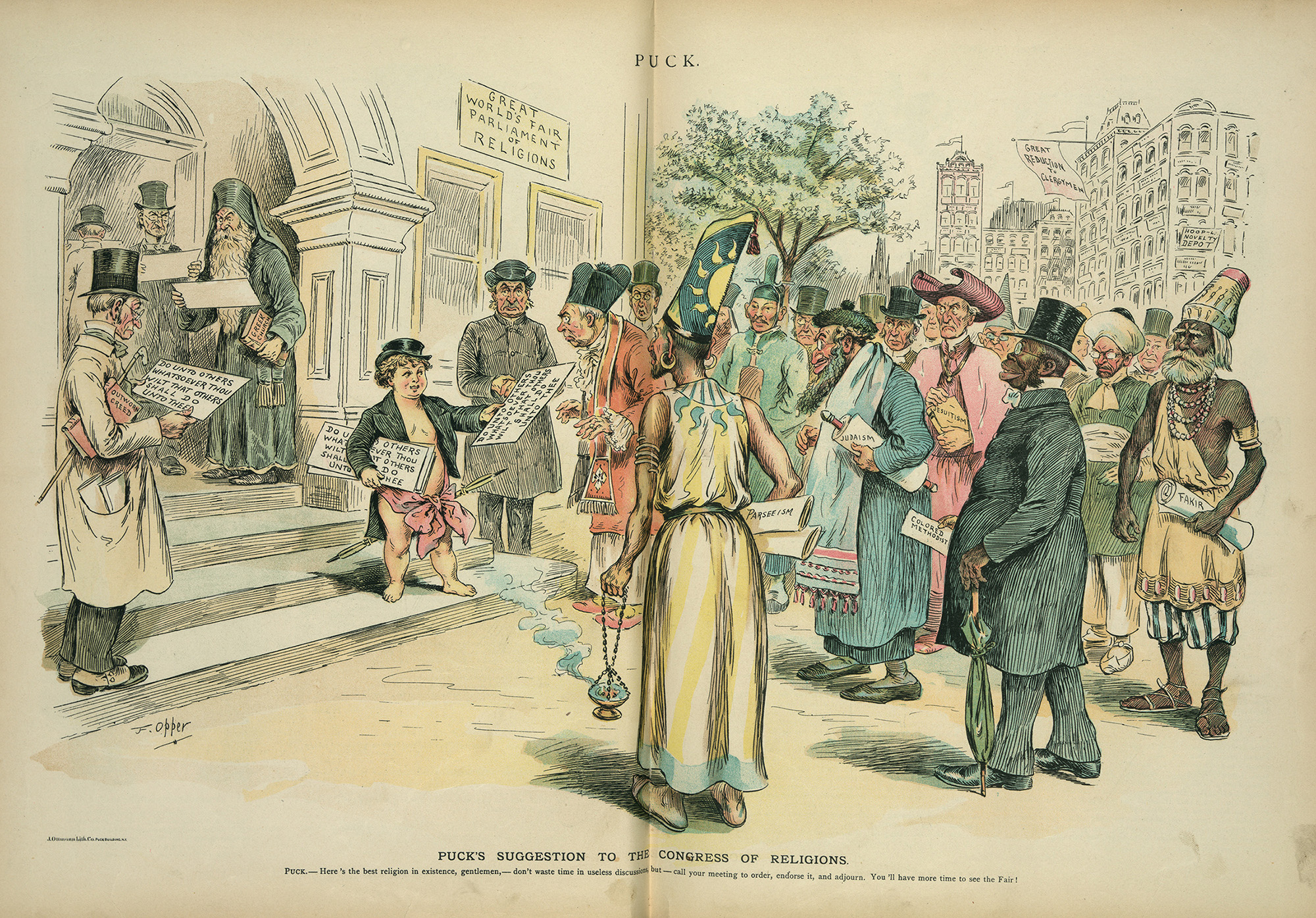
Pardee School of Global Studies
Center for the Study of Asia
presents
Religion at the World’s Fair
World’s Parliament of Religions
The World’s Parliament of Religions was considered by its organizers “the most noble expression of the World’s Columbian Exposition.” To some it was a celebration of religious unity, bringing together representatives from many of the world’s great religious traditions to speak with a single voice about the great religious questions of the age. To others it was an expression of religious diversity and a chance for new religious voices, especially Asian voices, to make their presence felt on an international stage. We now look back at the Parliament as the first acknowledgement of religious pluralism in America and the start of a new era in which Asian religious teachers made Asian traditions a vibrant part of American culture.
Who were these teachers? What brought them to Chicago? What did they have to say? And how did their presence transform the understanding of religion in American life?
We will meet Swami Vivekananda, the orange-robed representative of an ancient Hindu monastic order who electrified the Parliament with his greeting to “Brothers and Sisters in America.” We will meet the Japanese Zen Master Soen Shaku, who turned the interest of America toward Zen. We will meet the Sri Lankan Buddhist Anagarika Dharmapala, who understanding of “modern” Buddhism changed the way Buddhism was understood not only in America but across the rest of Asia.
These are just a few of the personalities who brought the diversity of Asian religions to life on the Chicago stage over a period of seventeen days in 1893 that changed the face of religion in America.
In this website, we will explore the key Asian representatives to the Parliament, learn about their traditions, and meet some of the people who keep their traditions alive in America today.
Origins:
The idea for the World’s Parliament came from Charles Bonney, who in 1889 proposed the creation of an organization called the World’s Congress Auxiliary. The Auxiliary grew to comprise twenty different departments. To house them the city of Chicago, the Chicago Art Institute, and the Exposition Corporation constructed the Memorial Art Palace. The Committee on Foreign Relations in the Senate and the consular offices of the State Department assisted in overseas recruitment. Eventually one million circulars were sent out in search of delegates. The Auxiliary sponsored 200 different conventions. Of them all, the conventions of the Department of Religion, the Parliament in particular, drew the most attention, the most applause, and the best press. To chair the Department of Religion, Bonney chose John Henry Barrows, minister of Chicago’s First Presbyterian Church.
The mission of the Parliament was to express the unity of all the religions of the world, “to unite all Religion against irreligion” on the basis of the Golden Rule. The organizers of the Parliament understood the unity of religion in a distinctly Judeo-Christian way, based on ideas about the existence of God, the moral law, and “the will of the Creator.” This theological orientation proved problematic for many of the Christian participants. (Some thought it was too broad; some thought it too restrictive.) It also led to resistance from many of the Asian participants, including Buddhists, who denied the existence of God, and representatives of Confucian tradition who were skeptical of the importance of religion itself. Some Christian leaders found the idea so dubious that they refused even to participate. The Archbishop of Canterbury famously remarked that “the Christian religion is the one religion” and he did not see “how that religion can be regarded as a member of the Parliament of Religions without assuming the equality of other members and the parity of their claims” (Rick Fields, When the Swans Came to the Lake, 120, quoted from Seager p. 79). (The basic source for this historical background is Richard Seager’s The World’s Parliament of Religions, chapter 3).
Quotations:
This day the sun of a new era of religious peace and progress rises over the world, dispelling the dark clouds of sectarian strife. This day a new flower blooms in the gardens of religious thought, filling the air with its exquisite perfume. This day a new fraternity is born into the world of religious progress to aid in the upbuilding of the kingdom of God in the hearts of men (from Charles Carroll Bonney’s “Welcome to the Parliament”).
EXHIBITION ROOMS

Room No. 1
Before the Parliament

Room No. 2


